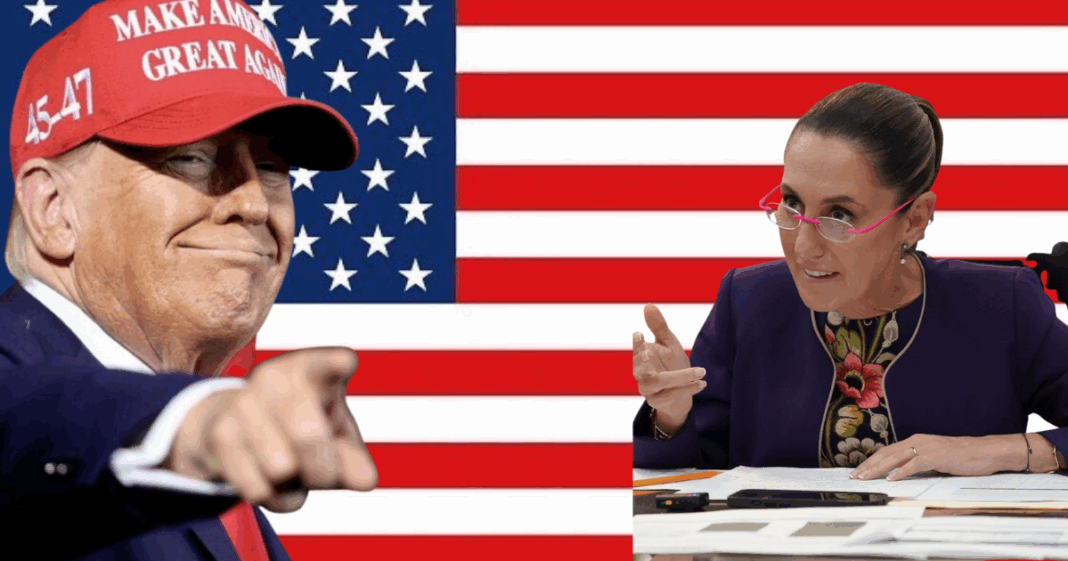- President Trump extended the U.S.–Mexico trade framework for 90 days following talks with Mexican President Claudia Sheinbaum.
- Existing tariffs remain: 25% on autos and fentanyl-related goods, 50% on steel, aluminum, and copper.
- Mexico agreed to eliminate non-tariff barriers that had hampered U.S. exports.
- The move aims to stabilize cross-border trade while addressing immigration, fentanyl, and industrial security.
- A final agreement is expected to be negotiated within or beyond the 90-day period.
What Prompted the Delay?
President Donald Trump announced a 90-day extension of the current trade framework with Mexico, temporarily holding off on new tariffs. The move followed a phone conversation with Mexican President Claudia Sheinbaum and signals an effort to preserve one of North America’s most integrated trade partnerships while addressing growing concerns around security, industry, and public health.
Taking to Truth Social, Trump said the deal maintains the current tariff regime, including a 25% tariff on cars and fentanyl-related products, and a 50% tariff on steel, aluminum, and copper. He emphasized:
Trump added that Mexico has agreed to eliminate its non-tariff trade barriers, setting the stage for negotiations that could lead to a long-term agreement.
Mexico’s Response: Dialogue Over Disruption
Mexican President Claudia Sheinbaum confirmed the outcome in a post on X, stating that the two countries had avoided an imminent tariff escalation and gained time to work toward a durable trade pact. “We avoided the tariff increase announced for tomorrow and secured 90 days to build a long-term agreement through dialogue,” she wrote.
She was joined in the conversation by top officials including Foreign Minister Juan Ramón de la Fuente and Economy Minister Marcelo Ebrard, underlining the diplomatic weight behind the decision.
Decades of Economic Integration
The announcement builds on a long history of U.S.–Mexico economic ties. From NAFTA in 1994 to the USMCA in 2020, both nations have developed deeply interdependent supply chains—especially in automotive, electronics, and agriculture.
According to the U.S.–Mexico Economic Ties report by the Trade Council, bilateral trade reached $839.9 billion in 2024, with Mexico exporting over $85 billion in vehicles and $66.3 billion in auto parts to the U.S. The report’s key findings note:
- U.S. foreign direct investment in Mexico is at record highs
- Nearshoring is accelerating to reduce reliance on distant suppliers
- Trump’s 2025 tariffs caused short-term disruption, later stabilized by USMCA rules
Where Trade Meets Security Policy
Beyond economics, the extension reflects Trump’s broader strategy to link trade policy with border control. The inclusion of fentanyl-related products in the tariff regime is part of an attempt to combat the flow of synthetic opioids into the U.S., while also applying economic pressure to achieve stricter immigration enforcement.
Senior figures including Vice President JD Vance, Secretary of State Marco Rubio, and Homeland Security Advisor Stephen Miller were reportedly involved in the discussions, underscoring the national security angle of the trade framework.
Meanwhile, companies are already reacting. Automotive giant Stellantis temporarily halted operations at its Toluca facility, citing uncertainty over the evolving U.S. trade stance.
What Comes Next?
Though the extension delays immediate disruption, it’s not a resolution. It gives both nations time to draft a durable agreement while keeping industrial and public health safeguards in place. Businesses must use this window to review supply chain structures and ensure compliance with USMCA’s labor and origin requirements.
For policymakers, the next 90 days will be a delicate balancing act—pursuing domestic economic goals without undermining a critical hemispheric alliance.
Trump to Impose Penalties on India Over Russian Arms Purchases
Federal Reserve Holds Interest Rate Amid Global Trade Shifts
Follow Virginia Times for regular news updates. Stay informed with the latest headlines, breaking stories, and in-depth reporting from around the world.
A global media for the latest news, entertainment, music fashion, and more.















